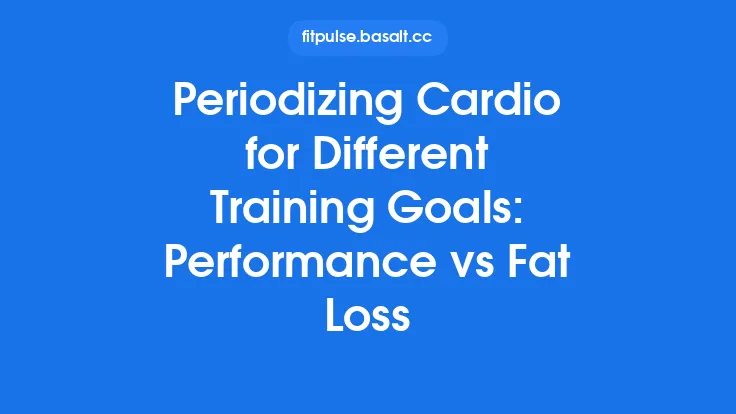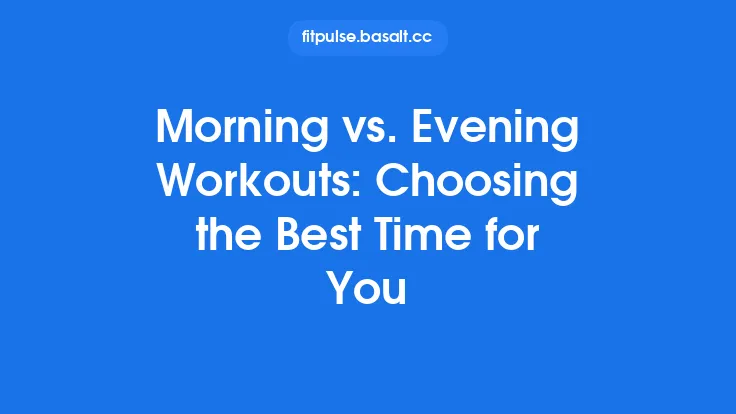When you sit down to design a training program, the first decision you’ll face isn’t “how many sets or reps should I do?” but rather “what should dominate the stimulus: the total work performed (volume) or the load lifted relative to your maximum (intensity)?” This choice sets the tone for every subsequent variable—exercise selection, rest intervals, frequency, and even the type of equipment you’ll use. By clarifying the primary focus early, you can align the program with the specific adaptations you’re after, avoid wasted effort, and keep the training experience both purposeful and motivating.
Understanding the Core Distinction Between Volume and Intensity
- Training Volume refers to the cumulative amount of work done in a session or over a training period. In resistance work, it’s typically expressed as the product of sets, repetitions, and load (e.g., total tonnage). In broader terms, volume captures how much muscle tissue is being recruited repeatedly over time.
- Training Intensity denotes the relative load or effort placed on the musculature in a given set. In strength‑oriented contexts, it’s often expressed as a percentage of a one‑rep max (1RM) or as the perceived difficulty of a lift. Intensity reflects how close you are to the mechanical limits of the muscle fibers you’re targeting.
While both variables interact—high intensity inevitably adds to total work, and high volume inevitably raises the overall stress—they are not interchangeable. A program that emphasizes volume will typically involve lighter loads, more repetitions, and more sets, whereas an intensity‑focused program will rely on heavier loads, fewer repetitions, and fewer sets. The key is deciding which of these two levers should drive the adaptation you’re after.
Aligning Training Goals With a Primary Emphasis
| Training Goal | Primary Focus | Rationale |
|---|---|---|
| Maximal Strength (e.g., 1RM bench press) | Intensity | Neural adaptations—motor unit recruitment, firing frequency, and inter‑muscular coordination—are maximized when the nervous system is repeatedly challenged with near‑maximal loads. |
| Hypertrophy (muscle size) | Volume | Muscle protein synthesis is most strongly stimulated by a high total amount of mechanical tension and metabolic stress, which are best achieved through multiple sets and moderate loads. |
| Muscular Endurance (e.g., 20‑rep sets, circuit training) | Volume | Endurance relies on the ability of muscle fibers to sustain repeated contractions; this is cultivated by prolonged time‑under‑tension and high repetition schemes. |
| Power & Explosiveness (e.g., Olympic lifts, plyometrics) | Intensity (with a speed component) | Power is the product of force and velocity. Training with heavy loads moved quickly forces the neuromuscular system to generate high force rapidly, demanding high intensity. |
| Body Composition / Fat Loss | Volume (with moderate intensity) | Elevated caloric expenditure and metabolic stress are best achieved through higher total work, especially when combined with short rest intervals that keep heart rate elevated. |
| Skill / Technique Mastery (e.g., gymnastics, sport‑specific drills) | Intensity (skill‑specific load) | Precise motor patterns are refined under conditions that closely mimic the performance load, requiring relatively high intensity to reinforce correct biomechanics. |
Decision Framework for Prioritizing Volume or Intensity
- Define the Primary Goal – Clarify the single most important outcome for the upcoming training block (e.g., “increase my squat 1RM by 15 lb”).
- Assess Athlete Profile – Consider training age, injury history, and biomechanical strengths. Novices often benefit from a volume‑centric approach to build a base, whereas seasoned lifters may need intensity spikes to break plateaus.
- Time Horizon – Short‑term goals (4‑6 weeks) can tolerate a sharper focus (e.g., an intensity block for a competition). Longer cycles (12+ weeks) usually require a blend, but the primary focus should still dominate the early phases.
- Equipment & Modality – Access to heavy loads (e.g., power rack, barbells) naturally supports intensity‑focused work; limited equipment may necessitate volume‑based strategies (e.g., bodyweight circuits).
- Recovery Capacity – While not the central theme of this article, it’s worth noting that high‑intensity sessions demand more systemic recovery, influencing how many such sessions you can safely schedule.
Practical Programming When Volume Is Primary
- Set Structure: 3–5 sets per exercise, 8–15 repetitions per set.
- Load Selection: 60–75 % of estimated 1RM, enough to maintain good form throughout the set.
- Rest Intervals: 60–90 seconds to keep metabolic stress high while allowing sufficient turnover for the next set.
- Exercise Choice: Emphasize multi‑joint movements (e.g., squats, presses) combined with isolation work to maximize total muscle activation.
- Session Frequency: 3–5 days per week, allowing each muscle group 48–72 hours of recovery.
- Secondary Intensity Integration: Include occasional “heavy” singles or doubles (1–2 % of total volume) to preserve neural adaptations without compromising the volume emphasis.
Practical Programming When Intensity Is Primary
- Set Structure: 3–6 sets per exercise, 1–5 repetitions per set.
- Load Selection: 80–95 % of 1RM, focusing on maximal or near‑maximal effort.
- Rest Intervals: 3–5 minutes to fully replenish phosphocreatine stores and ensure high‑quality lifts.
- Exercise Choice: Prioritize compound lifts that allow the greatest load (e.g., deadlift, bench press, overhead press).
- Session Frequency: 2–4 days per week, with each major lift performed 1–2 times per week to manage central nervous system fatigue.
- Secondary Volume Integration: Add “back‑off” sets at 60–70 % of the working load (e.g., 2–3 sets of 8–10 reps) to promote hypertrophy and aid recovery without diluting the intensity focus.
Transitioning Between Focuses Within a Training Cycle
- Linear Progression – Begin with a volume‑dominant block (4–6 weeks) to build a muscular foundation, then shift to an intensity‑dominant block (3–4 weeks) to convert that foundation into strength.
- Undulating (Non‑Linear) Approach – Alternate weekly or even daily between volume‑heavy and intensity‑heavy sessions. This method keeps both stimulus pathways active but requires careful monitoring to avoid overreaching.
- Block Periodization – Separate the macrocycle into distinct “blocks” (e.g., hypertrophy block → strength block → power block). Each block has a clear primary focus, with the preceding block providing the necessary substrate for the next.
When moving from one emphasis to another, taper the previous stimulus gradually. For example, reduce the number of high‑volume sets over the final week of a hypertrophy block before introducing heavy singles, allowing the nervous system to adapt without a sudden shock.
Monitoring and Adjusting the Primary Focus
- Performance Markers: Track weekly changes in the key metric for your goal (e.g., 1RM for strength, total reps at a given load for hypertrophy).
- Subjective Feedback: Note perceived difficulty, motivation, and any lingering soreness that may indicate an imbalance.
- Objective Data: Use simple tools like a training log to calculate total tonnage or average load per session; trends will reveal whether the intended focus is being maintained.
If strength gains stall while volume remains high, consider shifting a few sessions toward higher intensity. Conversely, if fatigue accumulates and performance on heavy lifts declines, re‑introduce more volume to promote recovery and tissue remodeling.
Common Pitfalls Specific to Mis‑Choosing Primary Focus
- Over‑emphasizing Volume When Strength Is the Goal – Leads to excessive muscular fatigue, limited neural adaptation, and slower progress on maximal lifts.
- Prioritizing Intensity for Pure Hypertrophy – Results in insufficient time‑under‑tension, reducing the metabolic stress needed for optimal muscle growth.
- Neglecting Skill Transfer – Heavy loads without adequate practice at sport‑specific speeds can impair technique, especially for power athletes.
- Inconsistent Focus – Frequently switching between volume and intensity without a structured plan dilutes both stimuli, producing mediocre gains across the board.
Final Thoughts
Choosing whether volume or intensity should dominate a training program is not a matter of “one is better than the other.” It is a strategic decision that hinges on the athlete’s primary objective, training history, and practical constraints. By clearly defining the goal, aligning the primary focus with that goal, and structuring the supporting variables accordingly, you create a coherent stimulus that drives the desired adaptation efficiently. Remember that the secondary variable still plays a role—volume can’t be entirely ignored in a strength block, nor can intensity be completely omitted in a hypertrophy phase—but keeping the primary emphasis front and center ensures that every rep, set, and load contributes meaningfully to the end result.





